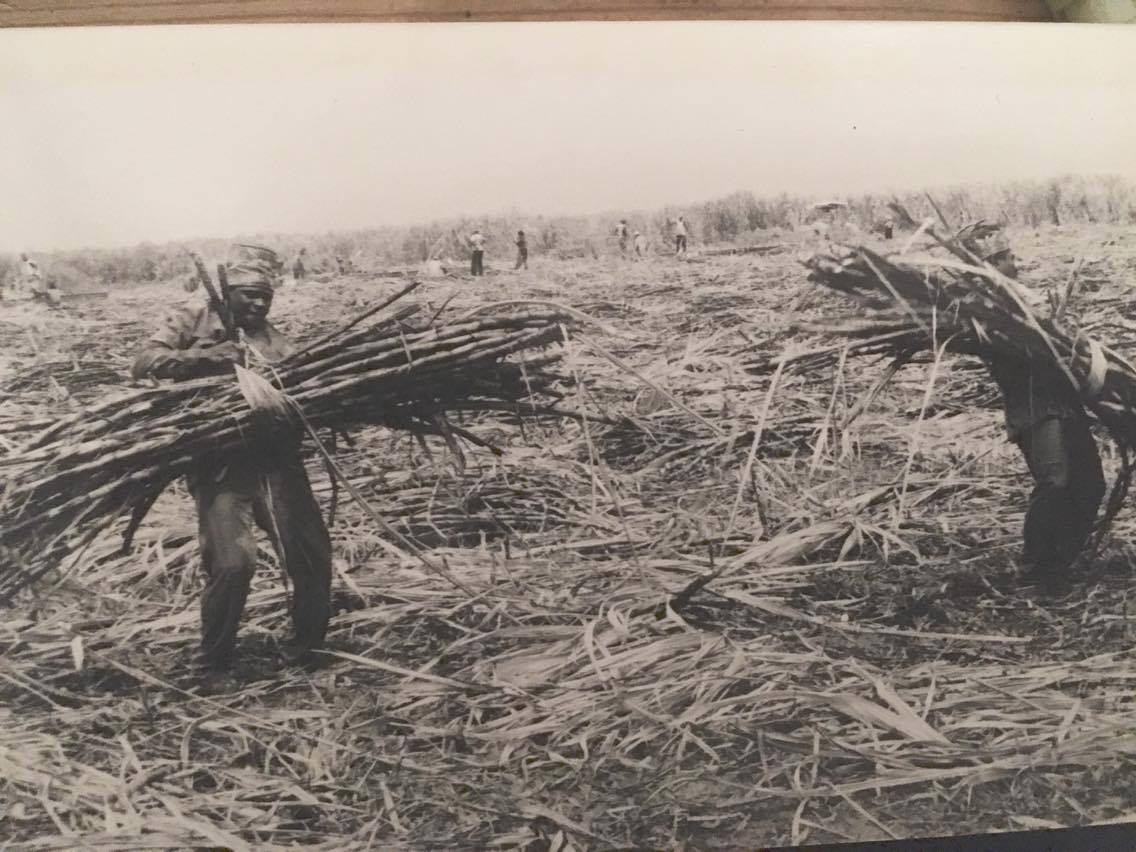Archive: Sugar
Years: 2015, 2016

The Sugar Industry in Guyana
Friday 25th September 2015
A panel of four experts presented their views on the sugar industry in Guyana. The most newsworthy aspect of the evening was probably the size and composition of the audience. In at attempt to canvass different opinions and reach a variety of interest groups, Moray House Trust issued invitations to an extensive guest list prior to the event. Despite follow-up, there were no representatives on Friday evening from GuySuCo, the Commission of Inquiry, Caricom, the print media, the local rum producers or the diplomatic corps in attendance. In fact, only a couple of dozen souls (including a minister, a major manufacturer of local confectionary and members of the Guyana Agricultural Workers Union) turned out to discuss the fate of the centuries-old industry which most of our forebears came here to serve and which still employs thousands of our countrymen.
The other striking aspect of Friday’s event was how convincing a case could be made both for and against the continuation of sugar.
Video Clips
1: Highlights: The Sugar Industry in Guyana
You Tube Link: https://youtu.be/OWZBLDqjjCI
2: Highlights: Not for want of ‘go-aheadism’ in field and factory: sugar and technology in C19 Guyana.
Dr Allyson Stoll showed that, in the nineteenth century, the industry faced equally daunting challenges (for example in terms of labour shortages and access to markets). She provided fascinating insights into the quality and depth of scientific research and development that took place and how these underpinned progress. Dr Stoll highlighted the absence of a cane-breeding programme and indeed any formal structure for research and development as a signal omission at present.
You Tube Link: https://youtu.be/uGrjxV9pumo
3: Highlights: Sugar and Guyana: an exasperating relationship
Rawle Lucas presented a sober assessment of the sugar industry and highlighted the importance of fiscal prudence and public accountability in charting a course for GuySuCo, a public enterprise. He pointed out that Guyana is a marginal player in the international sugar market, a market characterised by increasingly competitive pricing at a time when Guyana’s production costs are spiralling. He cited statistics to show that, of approximately 1700 strike actions since 1986, 95% occurred in the sugar industry and he reminded the audience that employment represents two-thirds of industry costs at present.
You Tube Link: https://youtu.be/GuCS_Uf7WOs
4: The Markets for Guyana Sugar
Barry Newton, whose familiarity with the sugar industry in Guyana extends over a period of 50 years, presented a paper (read by the moderator). He highlighted the need to refocus on markets closer to home, principally within Caricom, and the failure of Caricom and Cariforum to seriously address this. Mr Newton pointed to the potential for a substantial expansion into North Caribbean markets, particularly Haiti, a ‘key potential consumer with no production facilities and a fast growing population of about 10 million’.
You Tube Link: https://youtu.be/R0AMZOsYd-A
5: Restoring GuySuCo to Profitability:
Vick Oditt chaired the Board of GuySuCo for a decade. He contextualised some of the statistics being repeated in the media and queried the disposal of significant land assets belonging to GuySuCo for which the entity has never received payment. Echoing Barry Newton, Mr Oditt spoke of the need for a completely new approach to growing sugar where the possibilities of co-generation, ethanol production and added value (e.g rum production) are fully exploited and sugar itself is a ‘byproduct’.
You Tube Link: https://youtu.be/axeDQucyozY
The Closure of Wales Sugar Estate: are there alternatives ?
Friday 5th February 2016
Speakers included a former GuySuCo manager with 35 service, a cane farmer with 35 years experience in sugar, a plant foreman who has worked at Wales for 30 years and a former Chairman of GuySuCo. Mr Ralph Ramkarran was the moderator for the event. In the interests of offering a plurality of views, Moray House Trust invited GuySuCo to field a representative on the panel. The Trust also invited the management of GuySuCo, the board of GuySuCo, several ministers and the private sector to attend the event. The Trust was disappointed to note an apparent lack of willingness to engage, particularly on the part of those who hold public office or who are paid by the public purse.
Video Clips
The Closure of Wales Estate: are there alternatives ?
A sampling of the presentations.
You Tube Clip: https://youtu.be/NiJ84XO0dSo
An Overview: Jairam Petam, who worked for GuySuCo for 35 years until 2015, presented an overview of Wales Sugar Estate and environs. There are about 800 private cane farmers engaged in farming at Wales and that they account for over 50% of the estate’s cane supply. The yield from cane grown on the estate by GuySuCo dropped from 68 TCH (tonnes cane per hectare) to 51 TCH between 2008 and 2015. During the same period, the private farmers increased their supply from 7,700 to 10,200 tonnes, that is, from 31% to 51 % of the total supply.
You Tube Clip: https://youtu.be/d_jp2uGfDIA
A Cane Farmer Speaks: Mr Derrick Venture, representative of La Retraite / Stanleytown Cane Farmers Association, the largest cane farming unit in the area, expressed concern on behalf of his fellow farmers at the proposed plans to move canes to Uitvlugt for processing. Major obstacles include the proposed route, the double handling of the cut cane and the loss of sucrose content in the cane as a result. The cane farmers have indicated that it is within their ability to take over the entire production of cane at Wales in time.
You Tube Clip: https://youtu.be/1R1MdYWAu_Y
A Wales Factory Worker Speaks: Mr Mark Khan, a plant foreman at Wales Sugar Estate refuted some of the claims made in the media about the condition of the estate. He explained, for example, that the allegation that the plant machinery at the factory is ‘old’ is misleading as all estates, (with the exception of Skeldon) have machines which are over half a century old. Sugar factories are built to run for hundreds of years. He also explained that there are 32 bridges on the estate. All are in good repair and eleven are made of concrete. This can also be verified by touring the estate. Mr Khan reminded the audience that he and many of his fellow workers have mortgages and other financial commitments that cannot simply be suspended indefinitely.
You Tube Clip: https://youtu.be/sYE-QlPm2qQ
An Analysis: Chris Ram, an accountant, pointed out that all sugar industries across the world are subsidised so that the world market price is not a ‘true comparison’ for what it costs to produce sugar anywhere. He also noted that while the Commission of Inquiry report included a financial assessment and projections, no-one appeared to have undertaken an economic assessment.
You Tube Clip: https://youtu.be/r5l0M4U6jLM
An Alternative: Vick Oditt, Chairman of the Board of GuySuCo for a decade (1993 – 2003) stressed that, whatever the outcome of this proposal, it was vital to continue field operations at Wales throughout 2016 (tilling, replanting and other husbandry) to ensure that Wales was still a functional estate at the end of the year. He also pointed out that at present hundreds of workers are turning up to work out with nothing to do. There is an 11 month variety of cane that could be planted and harvested at year end to keep workers occupied and the factory productive.
You Tube Clip: https://youtu.be/dtQpUle4P94

